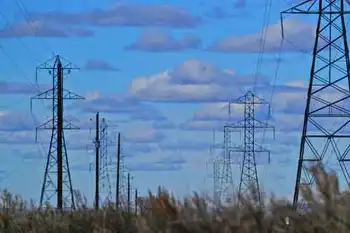Four US Northeast/Midwest grids near record power demand
NEW YORK, NEW YORK - Demand for electricity in the U.S. Mid-Atlantic and Midwest climbed to near record levels but did not exceed the all-time peaks set during an intense heat wave last week, power grid operators in the region said.
Despite widespread heat and humidity, grid operators said their systems held up well and no emergency conservation measures were needed to meet the surge in demand.
PJM Interconnection, which operates the biggest U.S. power grid serving more than 51 million people in parts of 13 Mid-Atlantic and Midwest states, said demand late Wednesday was running near 135,000 megawatts, or close to the grid's all-time high of 135,000 MW set last week on July 26.
"It's going to be close (to a record). We're expecting to come in right around 135,000 megawatts. Everything went fairly well throughout the day," said PJM spokeswoman Melissa Schwenk, adding PJM was expecting similar hot conditions on August 4.
High temperatures from Chicago to New York reached into the mid-90s Fahrenheit on August 3, with the humidity making it feel like more than 100 degrees.
But while New York another 90-plus day on August 4, readings in Chicago slipped back into the high-80s.
The New York ISO, which operates the state grid for more than 19 million people, said consumers did not use a record-breaking amount of energy on Wednesday but would probably set a new peak on August 4.
"We did not break the record today - the humidity was not quite what they expected - but we will tomorrow," said Carol Murphy, spokeswoman for the New York ISO.
Murphy said power demand August 3 peaked at 31,750 MW, shy of the all-time high of 32,075 MW set last week on July 26.
The New York ISO had a record demand of 32,600 MW on August 4. One MW powers about 800 homes, according to the North American average.
"We put our demand response program on call today, but we did not have to activate it," Murphy said.
Demand response customers receive lower electricity rates or other forms of compensation for agreeing to reduce consumption when called upon.
Murphy said the demand response programs could save more than 1,000 MW of energy, if triggered.
Earlier August 3, PJM did not forecast record-breaking demand on the following day because temperatures were expected to decline across part of its Midwest service territory, reducing overall cooling demand.
A cold front moved across the Midwest in late July, reducing overall PJM demand a day after the system set its all-time record. But the grid operator reduced the voltage in Maryland, northern Virginia and the District of Columbia to maintain reliability because the demand for power in the Mid-Atlantic states increased as the heat wave lingered there.
A voltage reduction, which is not noticeable for most electronic devices, reduces the amount of power flowing on the power lines.
Related News

Britain got its cleanest electricity ever during lockdown
LONDON - U.K electricity has never been cleaner. As wind, solar and biomass plants produced more power than ever in the second quarter, carbon emissions fell by a third from a year earlier, according to Drax Electric Insight’s quarterly report. Power prices slumped 42 per cent as demand plunged during lockdown. Total renewable energy output jumped 32 per cent in the period.
“The past few months have given the country a glimpse into the future for our power system, with higher levels of renewable energy and lower demand making for a difficult balancing act,”said Iain Staffell, from Imperial College London and…




